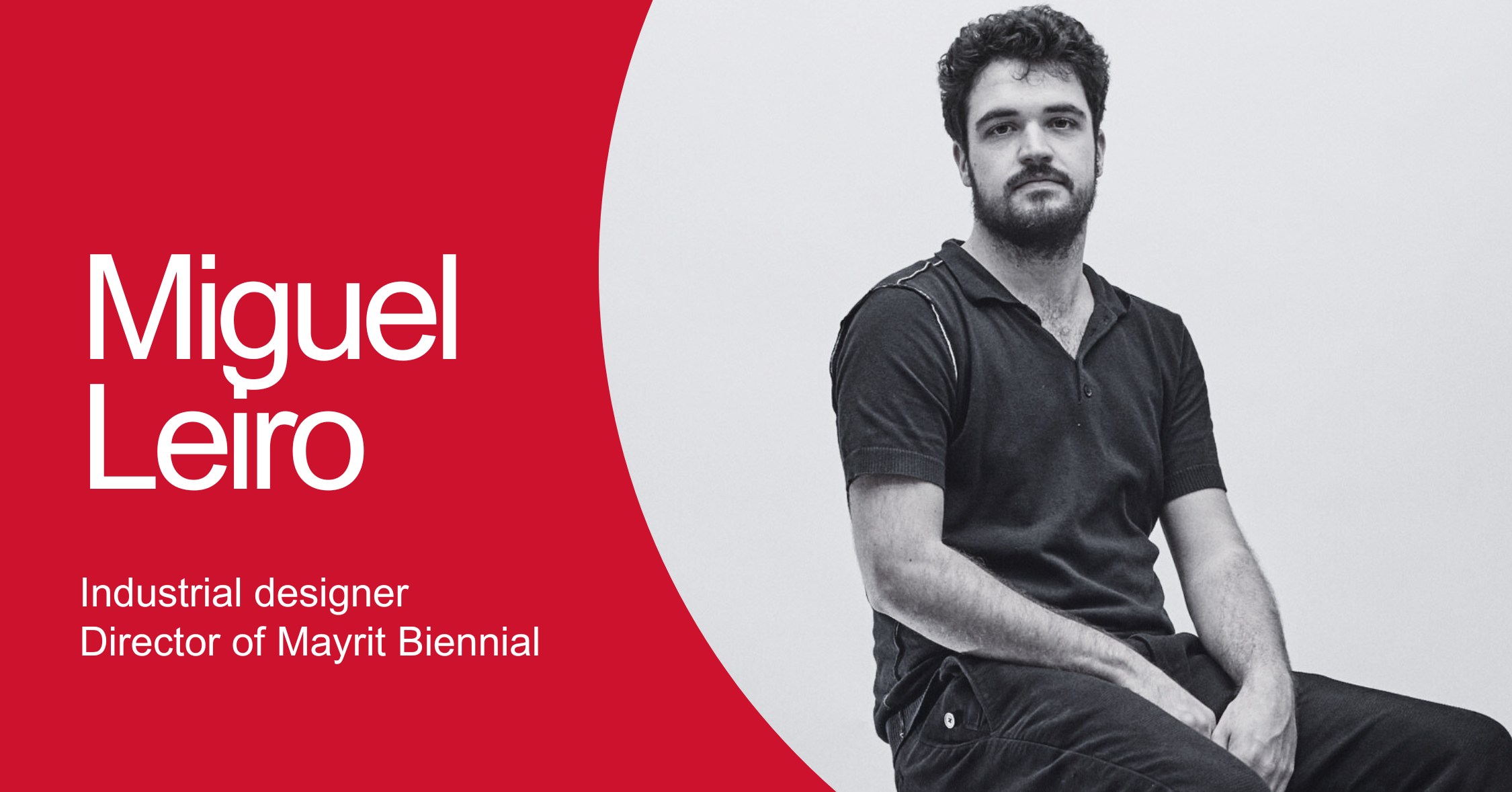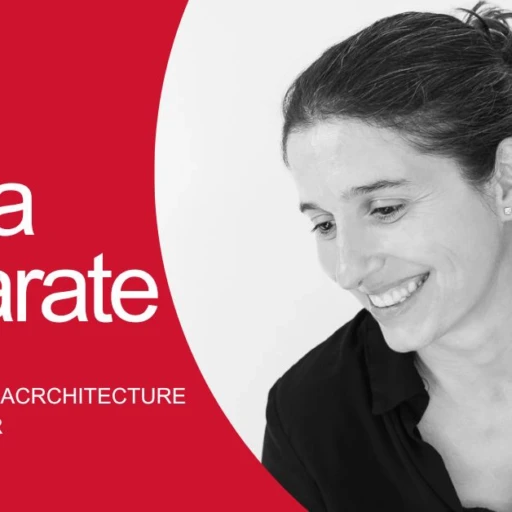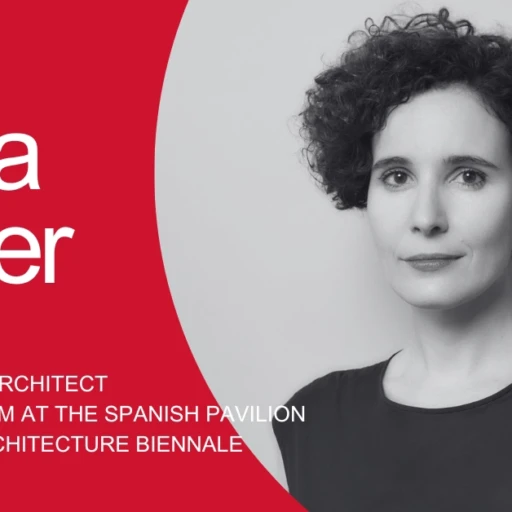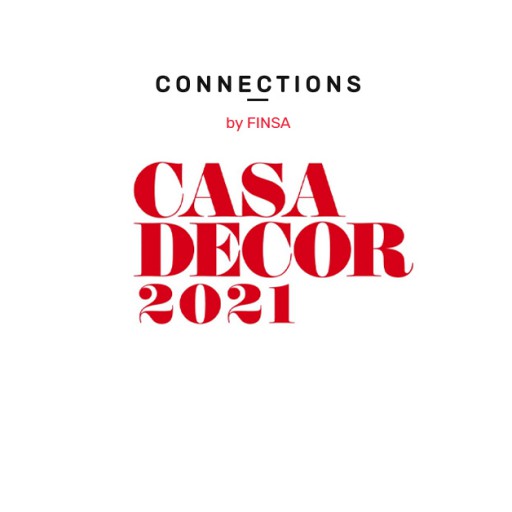In Miguel Leiro, the radicalism of craftsmanship and industrial innovation converge. Radicalism as he likes to read it, from the Latin etymology, starting from the root. His family roots connect him to woodworking in two expressions that can also be the same: art and furniture. He develops them in the form of products and also cultivates his roles as a professor and curator.
He has exhibited his work in more than nine countries and has been selected as a recipient of the Rome Prize from the Spanish Academy. Since 2019, he has directed Mayrit, a biennial of architecture and design that serves as a platform for young talents. We CONNECT WITH… Miguel Leiro to learn more about this event, the world of design fairs, and the promotion of a design culture in Spain.

Grandson of furniture makers, son of sculptor Francisco Leiro… Can we say that wood and design run in your veins? How did that passion start?
My great-grandfather, Francisco Leiro, founded a furniture shop in Cambados, which my grandfather Manuel Leiro continued. Francisco Leiro, my father, is a sculptor who combines furniture making with art, and I have always been a person interested in design. I grew up with objects at home that were the beginning of that passion. I always wanted to be an architect, but I wasn’t good at getting good grades and math wasn’t my strength, so I ended up studying design at the age of 16.
What have you learned from your family about design?
I learned to get excited, to always be curious to see and understand abstract concepts. If you’re not curious, you can’t become obsessed with anything, whether you’re a designer or a lawyer, and that obsession gives you the platform to develop what interests you.
In your opinion, what makes a piece of furniture unique?
On the one hand, the technological and industrial innovation of a piece of furniture, its relevance to the current moment, and a reason for its existence. On the other hand, the idea, which ties it to a more artistic practice, the importance of having a strong concept with that context and with the sector itself. These can be related but not exclusively. These powerful concepts become tangible through materiality, the way they are transformed, how we communicate the designs, how we exhibit them, their photography, and their use. A product has a capacity to communicate through its appearance and how it invites a user to use it.
How do tradition and modernity coexist in today’s interior design?
We have a great example in Loewe and all the work they propose with craftsmanship, although they use it as a form of marketing, but it is true that craftsmanship and thought give us tools to prototype and think of solutions that can be scaled to industrial production. It’s about finding this niche for the survival of the craft profession and having a dialogue with industrial designers who produce those pieces.
Ver esta publicación en Instagram
You mentioned in a recent interview that you prefer freehand drawing to digital tools… Has your perspective on this issue changed?
I will always be that way. I love drawing; I’m drawing all day with pen and paper. It’s my way of solving problems and communicating with myself. In my process, tools come later, although I see more and more professionals with tablets and digital pens… I don’t know if I will end up switching!
What do you think about the influence of artificial intelligence in design?
I think it is just another tool. For my survival, I look for the good side, learning how to use it and understanding its limits, and from there, from our humanity, maximizing our potential. It seems reminiscent of when the first CADs came out in the 90s and 2000s; it could be seen as an affront to the profession. I don’t see artificial intelligence replacing creativity because there are contexts that are too specific where it doesn’t add value.
During the pandemic, you explored medieval art history. What other issues inspire you?
History has always been something my parents instilled in me, and I implement it a lot in my process. When I was at the Spanish Academy in Rome, I developed a project linked to archaeology, to understand design beyond, as objects made of a material, which adds more than putting them on a pedestal. I am interested in knowing the history and typology of the project, not just the superficial, based on references on Pinterest. I want the story behind it, not just pretty chairs on Pinterest. In this way, you begin to understand all kinds of social, cultural, political, and economic connotations around the development of the product. It is undoubtedly what I enjoy most about the creative process.
You completed your education in New York, although you’re Galician. Do you think it is essential to do part of the learning away from your usual places?
Beyond the educational aspect, I consider travel to be very important. And you don’t have to go very far: Mérida or Cuenca provide me with the same as Bordeaux. It’s not the same, of course, but being a curious person willing to experience makes every place offer you something. In design, we travel a lot outside of Spain to see and understand the sector. Each country has a different way of understanding it. Finding that time to travel is vital for a young designer, and this can be done even within your own country.
Since we are talking about traveling, what value do international fairs have?
The commercial part is interesting, but I get more out of everything that is generated around it. For example, I spend a day at the Salone del Mobile in Milan, but what nourishes me the most is visiting the exhibitions throughout the city. On the other hand, fairs go through their own evolutions, some have become less important, and others have grown, like 3 Days of Design.
Ver esta publicación en Instagram
How did the idea of creating your own fair, Mayrit, come about, and what space does it fill in our country after these three editions?
It started from understanding design beyond products. I see it as a design culture of a country. I detected an opportunity and a need for young talents and works that were not found in Spain, something more contextual and speculative about design, a support platform to experiment and innovate. In fact, we are excited to see how the people who have participated in the biennial end up becoming renowned professionals.
Mayrit was created as a small festival that during covid we decided to change to a biennial, which allows us to work with exhibitions and researchers who can develop themes through research linked to design. It has provided us with a more academic vision that brings us closer to educational institutions, companies, and public administrations interested in these products.
It is not about selling products; there is a conceptual background that leads us to evolve and share that design culture in Spain. Now Mayrit has a very varied program, from the independent to the institutional, with exhibitions in CentroCentro, Museo de América, larger productions in the museum sector, given the proximity to this programming.
Don’t miss the must-sees of Mayrit that we highlight in this post.




